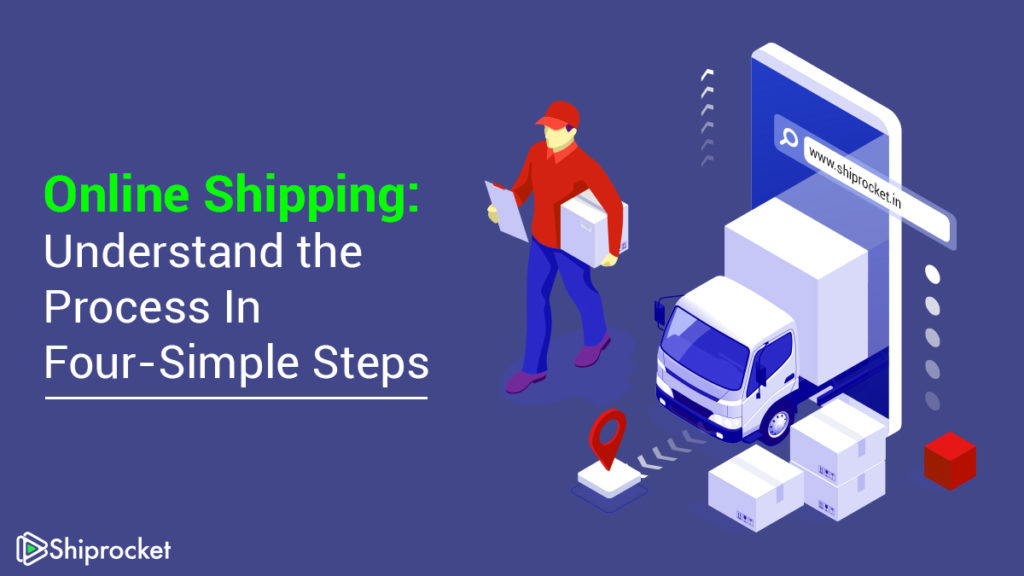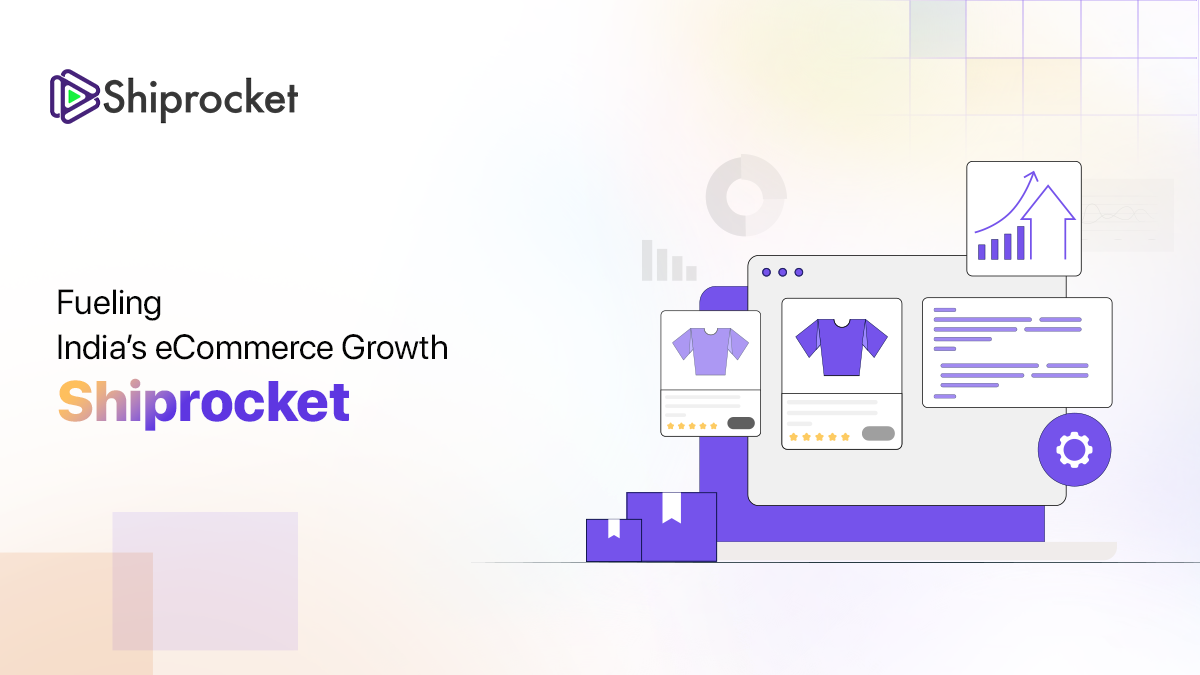Shipping Process: How Does Online Shipping Work?
Building a robust shipping process is essential for the safe and timely delivery of packages. Ensuring this will lead to a stronger customer base for your eCommerce company.
There are many reasons why shipping is described as the backbone of global trade. This process is responsible for transporting the majority of raw materials, components, and finished products that not only drive your online business revenue but the economy as a whole.
Without shipping, the entire process of supply chain management becomes ineffective. As the primary objective of an online business is the timely and efficient delivery of products to the end customers; various practices should be followed in eCommerce shipping.

What is Shipping Process?
The shipping process involves everything from receiving the customer’s order to preparing it for last-mile delivery. In simple words, this process involves a series of activities that relay the movement of goods from one point to another.
Logistics forms the core of any business, and the shipping process is crucial for your business to succeed. A robust shipping process is essential to enhance your customer base by ensuring timely and efficient delivery of goods.
How Does Online Shipping Work?
A well-managed shipping process influences how customers perceive a business and impact a customer’s satisfaction. If you are running a business, it is imperative to know and understand about the shipping process. It involves different stages to ensure the ordered items reach the customer safely and timely.
Let’s understand how the shipping process is separated into three major activities in India:
1. Pre-shipment
This stage involves accumulating shipping information, packaging, and labeling products, selecting a shipping method, and preparing documents such as a certificate of origin, packing list, customer declarations, invoices, etc.
2. Shipment and delivery
This is the second stage of the shipping process, which involves giving the parcel to the shipping carrier for the actual delivery of goods to the customer. This stage also involves tracking the parcel while it is moving towards its destination.
3. Post-shipment
The post-shipment stage is the last stage of the shipping process when the customer receives the parcel and confirms the delivery. The post-shipping process handles returns and exchanges, provides customer support, and manages lost or damaged packages.
Step-by-Step Guide to the Shipping Process
Read on to find out the eCommerce shipping process in seven simple steps that provide the best customer experience by ensuring that goods reach customers on time.
Step 1: Order Processing
Order processing is a term for a set of activities needed to process the customer’s order. Every purchase is tied to a specific order and tracking ID for the item to be delivered. Different teams have different tasks to perform in processing the order. The production and logistics team updates the inventory, closes the purchase order, and assigns tasks to the packaging and delivery team.
Step 2: Carrier Selection
Carrier selection significantly impacts shipping costs, delivery times, and customer support. Thus, this step is of the utmost importance in the shipping process.
With Shiprocket, one of the best shipping carriers in India, you can provide same or next-day delivery to your customers in case of urgent shipments. Moreover, you will also benefit from a range of value-added services that cater to different customers. For instance, the platform is also building payments and lending stacks for its sellers.
So, you should always choose a carrier that aligns with your business needs, expectations, and budget.
Step 3: Order Packaging
The next step is to pack the items properly before the ultimate shipping. Packaging has two-fold purposes; firstly, it prevents the item from getting damaged, and secondly, it helps create brand value. Some of the standard packaging options include boxes, packets, envelopes, etc.. The packaging is done based on the type of item.
Packaging should always be user-friendly and less cumbersome. However, it should be sturdy and durable enough to prevent the product from being damaged during transit. Moreover, your brand logo (if there is any) needs to be distinctly visible on the package, as it helps increase brand value and retention.
Step 4: Labelling
The shipping companies label the products with customer information such as their address, contact number, order number, tracking number, and methods of shipping.
Step 5: Logistics and Delivery
It is the fourth and most crucial step in the whole shipping process. eCommerce companies require a reliable logistics process for seamless and timely delivery to the customer. In this case, employing or partnering with reliable and reputed third-party logistics or courier agencies helps. They will deliver the items on your behalf.
eCommerce giants like Amazon have their own logistics divisions to deliver orders. Others can opt for online shipping aggregators like Shiprocket, which provides an option to choose from multiple shipping partners to the sellers and on pre-negotiated shipping charges.
Step 6: Tracking
The tracking number helps the supplier and buyer stay updated on the status of delivery. Using this number, they can track the package’s journey through the carrier’s website or app.
This step is crucial to ensuring customer satisfaction and optimal resource utilisation. The best part about tracking with a number is that customers can get real-time updates on their package status without having to contact customer support.
Step 7: Returns
Shipping also involves reverse logistics, that is, if the goods are returned due to any reason, which could be damaged, quality issues, or dissatisfaction from the customer’s end.
After the customer returns the items, the logistics agency ships them back to the retailer. Based on the return terms and conditions, the refund is processed by the retailer.
Types of Shipping Processes in India
You can streamline your business process, improve efficiency, and reduce errors to a great extent by optimising each step of the shipping process. Let’s gain insights into the different shipping processes that can optimise your shipping process as per your business requirements:
1. Freight Shipping
Freight shipping involves transporting bulk orders via land, air, or water. This type of shipping helps businesses expand their market reach, save costs, and transport efficiently.
Freight shipping is viable when you have a large shipment order that you cannot transport via standard methods. The cost of freight shipping depends on various factors, including the carrier company, the distance between the origin and the destination, the type and volume of goods, etc.
2. Pick and Pack Shipping
The pick-and-pack shipping process is well-known for its quick, hassle-free, and prompt delivery. It involves picking up items from the inventory, packing them, and shipping them to the customers.
This shipping method is suitable for large businesses offering a wide range of products. The best part is that you can customise the orders according to your needs. It is an ideal method for businesses that want to bring agility and efficiency to warehouse operations.
3. PTL Shipping
Partial Truckload (PTL) shipping is an option that provides businesses with a cost-effective means of transport. The major advantage of this shipping model is that two or more shippers can share the load and pay only for the specific place they have used.
It is an ideal shipping method if you have a small volume of goods that is insufficient for a full truckload. Many small businesses that need affordable shipping and strike a balance between cost and speed choose PTL shipping for delivering their products to their customers.
4. Drop Shipping
Drop shipping is a retail business model that enables brands to sell and transport their products to customers without incurring huge running costs and inventory risks. This shipping process does not let online businesses directly manage and distribute their product inventories, leading to saved warehouse space and upfront expenses/investments.
5. eCommerce Shipping
eCommerce shipping is targeted at online merchants. Depending on the type of goods they are selling and the audience they are targeting, this shipping method can include multiple options such as standard or express delivery, same-day or next-day delivery, local delivery, international delivery, free shipping, overnight shipping, etc.
6. Expedited Shipping
Expedited shipping ensures the fast delivery of goods to your customers. This shipping model caters to businesses that deal in time-sensitive or luxury goods. In most cases, expedited shipping can take 1-3 days for domestic shipments and up to five or more days for international deliveries.
You can opt for this shipping model by paying a premium price, which is higher than the regular shipping cost.
Streamline your Shipping Process with Shiprocket!
The increasing popularity of digital platforms has led to the rapid growth of eCommerce. With innovative shipping processes and techniques coming almost every day, it is expected to benefit both businesses and customers.
Whether you are doing domestic or international shipping, Shiprocket allows you to send bulk orders, get courier recommendations, and pick up orders from different locations. It also automates the shipping process of importing all your orders without manually syncing your websites each time and manages undelivered orders through an automated panel.
Conclusion
This blog provides useful updates related to advancements in the industry and tips on how to grow your eCommerce business. Shiprocket is the #1 eCommerce shipping solution in India, providing a hassle-free shipping experience to thousands of online sellers.
FAQs (Frequently Asked Questions)
No, you can ship as low as one order with Shiprocket.
Yes. With multiple courier partners, you can select a new one for every shipment.






